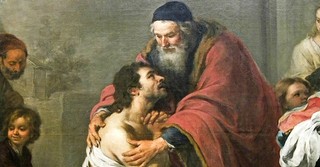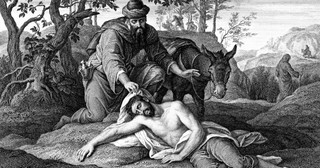Peter Denies Jesus Three Times - Bible Story Meaning
Share
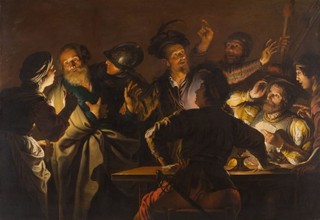
Many Christians chuckle when they read about the apostle Peter’s words and actions prior to Christ’s Passion week and certainly before He denied Jesus on the night before our Lord’s crucifixion. But, oh, the change after his denial of Jesus. He’s been called “comic relief,” impulsive, bold, over-confident, and yes, passionate. But when we read of Peter during the last supper Jesus had with His disciples, we can sense the coming change.
What Does the Bible Say about Peter Denying Jesus?
The narrative of Peter’s denial of Jesus begins within the context of the Passover meal He shared with His disciples. During the meal, Jesus declared, “Truly, I say to you, one of you will betray Me.” The disciples, “were very sorrowful and began to say to Him one after another, ‘Is it I, Lord?’” (Matthew 26:21-22).
Luke 22:23-24 gives us an interesting extra detail about the disciples’ reaction when Jesus said He had a betrayer: “And they began to argue among themselves which one of them it might be who was going to do this thing. And there arose also a dispute among them as to which one of them was regarded to be greatest.”
Surely Peter was involved in the argument because one time earlier in their ministry, as they came to Capernaum, the same kind of argument arose as to who of them was the greatest. Jesus knew the reasoning in their hearts then and He knew it when the Upper Room argument took place (Matthew 18:1-5; Mark 9:33-37; Luke 9:46-48).
The Lord didn’t make them wait long before He revealed Judas as His betrayer. And so, the disciples faced fear, a bit of self-righteousness (due to the argument), and then relief when Judas departed the room and their company.
After sharing the Passover meal with them, Jesus led His disciples to the Mount of Olives, where Jesus told them, “You will all fall away because of Me this night” (Matthew 26:31; Mark 14:27).
Peter’s oath of faithfulness to Jesus is found in Matthew 26:30-35, Mark 14:27-31, Luke 22:31-34, and John 13:36-38. In Matthew’s account, Peter says, "Though they all fall away because of You, I will never fall away.” Mark records Peter saying, “Even though they all fall away, I will not.” John’s gospel shares a different element: “Simon Peter said to Him, 'Lord, where are You going?' Jesus answered him, 'Where I am going you cannot follow Me now, but you will follow afterward.' Peter said to Him, 'Lord, why can I not follow You now? I will lay down my life for You.'"
Once again, Luke gives us a defining detail when Jesus says, "'Simon, Simon, behold, Satan demanded to have you, that he might sift you like wheat, but I have prayed for you that your faith may not fail. And when you have turned again, strengthen your brothers.' Peter said to him, ‘Lord, I am ready to go with You both to prison and to death.’ Jesus said, ‘I tell you, Peter, the rooster will not crow this day, until you deny three times that you know Me’" (Luke 22:31-34).
Jesus—the perfect One from whom no lie was ever conceived or spoken (1 John 2:27) told Peter he would deny Him, and nothing Peter could argue would change that fact.
How Many Times Did Peter Deny Jesus and Why?
On the same night Jesus was betrayed, Peter denied Him three times. Why?
As we saw above, when Jesus warned Peter while they were in the Upper Room, He said, “Simon, Simon, behold, Satan demanded to have you, that he might sift you like wheat” (Luke 22:31).
So, there is a spiritual warfare element to Peter’s denial. The devil went straight to Jesus and demanded to shake Peter’s faith in the Lord. To “sift him like wheat” meant Satan wanted Peter to undergo a severe test of his faith to expose any weakness in Peter. But the Lord denied Satan and, instead, prayed for Peter’s faith not to fail. It did, momentarily, but the Lord planned Peter’s restoration because He said, “…when you have turned again…”
Many scholars suppose fear also fueled Peter’s denial of the Lord Jesus. Perhaps he would be persecuted or even die if he defended Jesus.
Another possible reason for Peter’s denial of Jesus was his own confidence, as evidenced by his reaction to Jesus’ statement that they all would fall away on account of Him. He tried to engage Jesus' opponents on His own strength instead of on faith in the One who saved him (cf. Matthew 14:28-33).
The Bible doesn’t give us a definitive answer. We can only speculate.
Where in the Bible Does Peter’s Denial Take Place?
Thinking about Peter’s confidence, look at John 18:10-11. After Jesus and His disciples departed the Upper Room, they went to the Garden of Gethsemane, where the disciples fell asleep as Jesus prayed. Jesus’ betrayer, Judas, led soldiers to arrest Jesus. As a show of his bravado, Peter struck Malchus, the high priest’s servant, with a sword and cut off his ear, which Jesus healed (Luke 24:51).
As the soldiers led Jesus off to the high priest, Caiphas, the disciples fled, but Peter followed at a distance, and as Jesus underwent Caiphas’ “kangaroo court,” Peter waited outside the chambers in the courtyard.
All four gospels record the complete narrative recounting Peter’s denial of Jesus: Matthew 26:31-75, Mark 14:29-72, Luke 22:33-71, and John 18:15-40. The accounts dealing directly with Peter’s denial are found in Matthew 26:69-75, Mark 14:66-72, Luke 22:54-62, and John 18:15-18, 25-27
The details of Peter’s direct denial are very telling as they take on a three-part chronicle to match the Lord’s prophecy (the account below is from Matthew’s gospel):
- A servant girl came up to him and said, “You also were with Jesus the Galilean.” Peter denied it before the crowd and said, “I do not know what you mean.” Mark adds Peter was warming himself. Luke tells us the crowd was gathered around a fire. John tells us it was a charcoal fire.
- As Peter went out to the entrance to the courtyard, “another servant girl said to the bystanders around him, This man was with Jesus of Nazareth.” Peter again denied it “with an oath: ‘I do not know the man.’”
- “After a little while the bystanders came up and said to Peter, ‘Certainly you too are one of them, for your accent betrays you.’ Then he began to invoke a curse on himself and to swear, ‘I do not know the man.’” Mark’s gospel adds that Peter invoked a curse on himself and began to swear. Mark also adds the detail that Jesus said before the rooster crows twice, Peter would deny Him three times.
While each of the synoptic gospels tells us Peter wept bitterly (or broke down and wept) after the rooster crowed, Luke gives us a harrowing description of what happened immediately after Peter’s third denial of Jesus: “And the Lord turned and looked at Peter. And Peter remembered the saying of the Lord, how He had said to him, ‘Before the rooster crows today, you will deny Me three times.’ And he went out and wept bitterly.”
How Did Jesus Later Restore/Forgive Peter?
John 21:1-14 sets the stage for Peter’s restoration. After Jesus’ resurrection, He revealed Himself to His disciples a number of times. When Peter and five of Jesus’ other disciples were beside the Sea of Galilee (also called Tiberius), Peter decided to go fishing, and the others accompanied him. They caught nothing that night, and at daybreak, Jesus stood on the shore. They didn’t realize it was He as He called out to them, “Children, do you have any fish?” He then instructed them to cast the net on the right side of the boat and they hauled in a catch so large they couldn’t haul it into the boat.
John then recognized Jesus, and Peter flung himself into the water as the others, still in the boat, dragged the net to the shore. “When they got out on land, they saw a charcoal fire in place, with fish laid out on it, and bread.” Jesus bid them bring more fish for their breakfast, which Peter grabbed from the net.
A small but important detail is the charcoal fire. Remember it was as he warmed himself over a charcoal fire that Peter first denied Jesus. The smell surely brought a sad memory to Peter and his failure as a disciple. Jesus then took the moment to restore Peter in a threefold manner to counter Peter’s three-part denial of Him.
After breakfast, Jesus addressed Peter and said, “Simon, son of John, do you love Me more than these?” Peter answered, “Yes, Lord, You know that I love You.” To which Jesus answered, “Feed My lambs.”
Jesus’ second question to Peter was, “Simon, son of John, do you love Me?” Peter answered, “Yes, Lord; You know that I love You.” Jesus then told him to tend His sheep. And thirdly, Jesus asked Peter, “Do you love Me?” Peter, grieved by Jesus asking him three times if he loved Him, said, “Lord, You know everything; You know that I love You.’ Jesus said to him, “Feed My sheep. Truly, truly, I say to you, when you were young, you used to dress yourself and walk wherever you wanted, but when you are old, you will stretch out your hands, and another will dress you and carry you where you do not want to go.” (This he said to show by what kind of death he was to glorify God.) And after saying this he said to him, “Follow me.”
Just as Peter had rejected Jesus three times, Jesus asked him to confess Him three times. And then Jesus told Peter in three different ways to shepherd His sheep—feed His lambs, tend to them, and feed their souls. And so, Peter was restored and commissioned by the Lord.
Peter wasn’t restored because of anything he did. He was restored because of what Jesus did.
Peter’s denial of Jesus, while horrific and sad, was also momentary. Contrasted with the Jewish leaders’ ongoing (to this day) denial of Jesus as the Messiah, Peter’s restoration by Jesus was followed by Jesus’ commission to shepherd His church. The unbelieving, unrepentant Jews could never do this because they refused Jesus as Messiah and missed out on His grace.
Judas betrayed Jesus and faced damnation, while Peter denied Jesus and was restored. Why? Because Jesus prayed for him.
Our lessons are many from these passages. Simply put, we must believe in Jesus and what He has done. We can stand firm in faith and not worry about denying Him because of His Spirit within us. Because of our love for Him, we are to share the good news (the gospel) with those the Lord has placed in our paths. As we grow in the grace and knowledge of Him, we will love Him more and will be His hands and feet as he builds His church through us.
Read the Bible story of Peter denying Jesus according to each gospel below and find articles, videos and audio sermons relating to this advisory story.
Photo credit: Wikipedia, The Denial of Saint Peter, an oil-on-canvas painting by Gerard Seghers, dating to around 1620–1625 and now held by the North Carolina Museum of Art.[1]















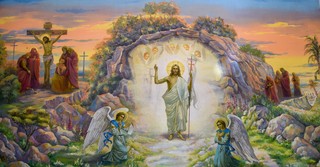

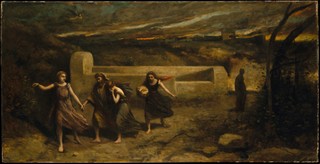
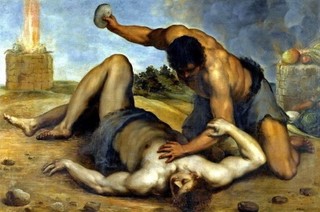
.800w.tn.jpg)

